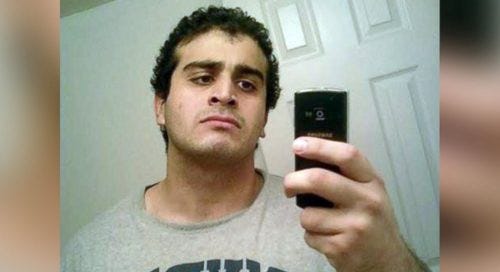Reuters on Terror: The “Wolf Den” Fallacy
Since the Pulse nightclub shooting in Orlando last weekend, the American public has sought answers as to who could have committed this atrocity- and why.
The two main theories, so far, revolve around the shooter’s sexuality and ethnicity: Did Omar Mateen shoot up Pulse, a gay nightclub, because of his sexuality? Or did he act because of his apparent allegiance to ISIS?
The latter theory has taken up most of the oxygen in media reports. The prevailing assumption is that Mateen was radicalized at some point, swore allegiance to ISIS, and acted as a “lone wolf” terrorist to shoot up Pulse. The “lone wolf” terrorist, by this line of thinking, is the new threat of terror in 2016.
One journalist, however, has another theory. Joseph Ax of Reuters posits that “lone wolf” attacks are less frequent than we are led to believe. Ax says that rather than “lone wolves” we need to fear clusters of terrorists- or “wolf dens.”
The evidence indicates that, in general, “wolf dens” surrounding the radicalized aren’t made up of anyone other than the FBI.
Ax’s piece begins by placing Mateen in the “lone wolf” category, at least from what we know so far. This is accurate, but this isn’t Ax’s point- he proposes that Mateen is actually the exception to the rule as far as ISIS related attacks go:
A Reuters review of the approximately 90 Islamic State court cases brought by the Department of Justice since 2014 found that three-quarters of those charged were alleged to be part of a group of anywhere from two to more than 10 co-conspirators who met in person to discuss their plans.
Scary stuff. How many sleeper cells are there in the US? How many “wolf dens?” Could there be one in my community?
The answer to that is most likely “no.” And the reason for that is buried in the above paragraph: “two to more.”
Ax goes into the FBI’s involvement in US ISIS plots later. The entire relevant portion of the article is worth quoting in full (emphasis added):
In an increasingly frequent occurrence, the defendant was unwittingly working with an FBI informant posing as a co-conspirator, as federal authorities rely more on human intelligence and less on the comparatively low-hanging fruit of social media to identify potential attackers.
Face-to-face interactions can accelerate extremist viewpoints, turning the group to violence, experts said. And it can draw in others who might otherwise not have been susceptible to the lure of jihadism.
So here we see Ax disproving his scare-quoted proposition from earlier- that “wolf dens” of radicalized terrorists are a clear and present danger across the US- with simple logic. If, as Ax says, these “wolf dens” are made up of “anywhere from two to more than 10 co-conspirators,” then it stands to reason that he must have used a number of “two” membered wolf dens. Otherwise, why include pairs in the analysis?
To take this to the next logical conclusion, if “the defendant was unwittingly working with an FBI informant posing as a co-conspirator” and “face-to-face interactions can accelerate extremist viewpoints,” then surely at least some of these “wolf dens” only exist because of FBI involvement.
The evidence of FBI involvement in the radicalization of US citizens over the past two years is undeniable. Here are four examples:
September, 2014: Mulfid Elfgeeh of Rochester, NY, is arrested for material support for ISIS after two informants approach him with their plans to travel to Syria. Prior to this moment, there was little evidence of any radicalization for Elfgeeh.
November 27, 2014: Olajuwon Ali Davis and Brandon Orlando Baldwin are arrested for plotting to blow up the Arch in St. Louis and police stations. The evidence included intending to purchase bombs from FBI informants- a product that was offered to the two men, not requested. In fact, the informants appear to have constructed much of the planning themselves, with Davis and Baldwin only agreeing to the plot and not independently generating it.
April, 2015: 7 Somali men in Minneapolis are charged with conspiracy to join ISIS. The evidence comes from a paid informant with a history of lying to authorities about crimes and whose actions suggest he set the entire plot in motion with little to no involvement from the charged.
July, 2015: Alexander Ciccolo of Adams, MA, is arrested for plotting to attack a local college. The entire plot, court documents show conclusively, was generated by an unnamed FBI informant who not only provided Ciccolo with the push he needed to take action, but also offered to purchase explosives for Ciccolo.
Multiple studies and reports have shown that FBI involvement overwhelmingly is the driving force behind radicalization of many, if not most, ISIS plots.
Human Rights Watch, July 21, 2015:
Multiple studies have found that nearly 50 percent of the federal counterterrorism convictions since September 11, 2001, resulted from informant-based cases. Almost 30 percent were sting operations in which the informant played an active role in the underlying plot.
The Intercept, February 26, 2015:
We’re constantly bombarded with dire warnings about the grave threat of home-grown terrorists, “lone wolf” extremists and ISIS….
But how serious of a threat can all of this be, at least domestically, if the FBI continually has to resort to manufacturing its own plots by trolling the Internet in search of young drifters and/or the mentally ill whom they target, recruit and then manipulate into joining?
With the rise of ISIL, there has been a renewed effort to counter potential threats on U.S. soil, including cases in which informants have played key — and some say controversial — roles.
“We have investigations of people in various stages of radicalizing in all 50 states,” FBI Director James Comey said in February. The message of ISIL in particular “resonates with troubled souls, people seeking meaning in some horribly misguided way,” he added. “Those people exist in every state.”
The New York Times, June 11, 2016:
The F.B.I. has significantly increased its use of stings in terrorism cases, employing agents and informants to pose as jihadists, bomb makers, gun dealers or online “friends” in hundreds of investigations into Americans suspected of supporting the Islamic State, records and interviews show.
Each of the above reports has extensive documentation of the lengths to which the FBI will go to manufacture “terror plots.”
So the question is- are there actually “wolf dens” in America, and if so, are they actually a threat? The answer appears to be- from all publicly available data- not that many and not really.
Most American “jihadis” only start down that path after the kindly push from a “fellow traveler” who turns out to be an FBI informant or agent.
If Ax (and by extension Reuters) are using “two or more” as their definition for “wolf dens” of extremism in the US- and if they’re refusing to leave out those pairs that include FBI informants- then the “Reuters review of the approximately 90 Islamic State court cases brought by the Department of Justice since 2014” that concluded that there is a legitimate threat of group of radicals in the US is not only wrong. It’s negligent.







